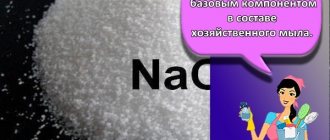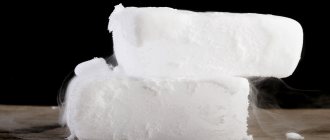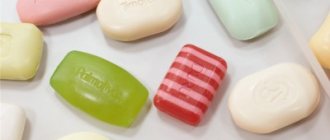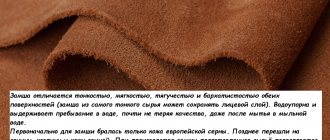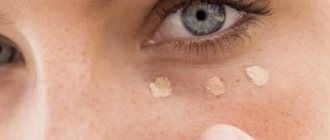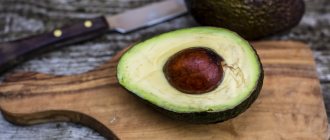What is soda?
Baking soda is a sodium salt that neutralizes acids. It is so unique and diverse in its manifestations that it has received several names and is successfully used in various fields of human activity. For example, every housewife is accustomed to the name baking soda, but chemists call it sodium bicarbonate. Depending on the chemical composition, soda powder can change its properties, from which it received several more names - soda ash, crystalline soda and others.
Sodium bicarbonate is found in sufficient quantities in nature, but humans need to extract it. Entire soda lakes are known - there are deposits of this valuable substance in Tanzania, California, and northern Russia. The Americans are richest in soda powder - their own deposits satisfy the needs of the country's population by forty percent.
As before, soda is extracted from minerals in soda lakes. Even in the first century AD, cases of obtaining soda powder from the evaporation of water from soda lakes became known, but the pure substance was obtained only in the first half of the 18th century, when one French naturalist de Monceau was able to obtain it experimentally. Since that time, factories for the production of soda powder, so necessary in the food, chemical and light industries, began to appear all over the world, including in Russia. And recently, sodium bicarbonate has deservedly occupied its niche in medicine.
Soda in cooking
Baking soda is mainly used to leaven baked goods, but this is not the only beneficial property of sodium bicarbonate.
Pancake recipes here: Custard pancakes with soda - step-by-step recipes with photos, you'll lick your fingers
In addition, soda can do:
- Tough meat is softer.
- The omelette is more fluffy.
- Fruits and berries are sweeter.
- Boiled vegetables are greener.
- Tea and coffee are more aromatic.
Starchy vegetables become lighter in color after washing in a soda solution, and peas and beans cook faster in alkaline water.
Soda does not have to be present in pancakes and pancakes. You can do without soda.
Chemical formula of baking soda
Sodium bicarbonate has the formula NaHCO3, where Na is sodium, H is hydrogen, and CO is carbon.
The atomic mass value is 84.00 a.u.
The molar mass of the substance is 84.007 g/mol.
The density of sodium bicarbonate is 2.16 g/cm3.
Formula for the reaction of baking soda and vinegar
NaHCO3 + CH3COOH → CH3COONa + CO2↑ + H2O
Formula for the reaction of baking soda and citric acid
Н3С6Н5О7 + 3NaHCO3 → Na3C6H5O7 + 3CO2 + 3H2O
Possible harm
Baking soda should be consumed internally in limited quantities and according to strict indications. Bicarbonate crystals in large quantities are toxic to the mucous membrane of the digestive system and can cause severe irritation and allergic reactions.
It is not recommended to use solutions based on sodium bicarbonate for people suffering from erosive and ulcerative processes of the stomach and intestines, low stomach acidity and anacid gastritis.
If you regularly inhale carbon dioxide vapor or bicarbonate crystals, for example, in the production of soda, irritation of the respiratory mucosa may occur.
Frequent use of soda solution threatens persistent organic disorders of the digestive system. Alkalinization of gastric juice occurs, as well as a shift to the highly alkaline side of the intestinal contents.
Characteristics of sodium bicarbonate
Baking soda is an acidic sodium salt of carbonic acid. It reacts with various acids, but as a result of the chemical reaction an unstable compound is formed - salt and carbonic acid. As a result of weak chemical bonds, the compound quickly breaks down into water and carbon dioxide. That is why, when exposed to vinegar, we hear a characteristic hissing sound - this is the release of carbon dioxide.
Soda breaks down into its components at a temperature of 60 degrees. That is why it is recommended to dilute it in water at exactly this temperature. As a result of soda powder getting into water, sodium carbonate, water and carbon dioxide are formed. The most effective treatment for sodium bicarbonate is a temperature of 200 degrees, but such treatment is impossible for humans. Soda is a compound of sodium cation and bicarbonate anion, which, when introduced into the body, is actively involved in the correction of acid-base balance. However, soda and high temperatures have found their application in other areas of activity. At a temperature of 1000 degrees, sodium carbonate is converted into two substances - sodium oxide and carbon dioxide. Based on this property, soda is used to extinguish fires in special fire extinguishers with powder systems.
In terms of its appearance, soda powder is quite attractive. It consists of tiny white crystals. There is no pungent odor coming from it. The substance is thermally unstable, and when it gets into water it has a weak alkaline character. Melts at a temperature of 850 degrees.
Although soda is classified as a salt, this classification is more formal than reflects the actual properties of soda.
Many people believe that soda is an alkali, and this statement is partly correct. After all, when interacting with water, soda powder provokes alkalization, and this makes it possible to put it in the border categories - salt and alkali. Therefore, the statement that soda is an alkali also has a right to life.
Read also: Potato juice beneficial properties and use for various diseases
Price, expiration date and storage rules
- Baking soda is one of the cheapest products. A half-kilogram package costs only 15 rubles.
- The guaranteed shelf life is 12 months, but in a dry place and secure packaging, the alkali retains its properties longer.
- When purchasing packaging, make sure it is intact. Powder in an unsealed package absorbs moisture and loses its beneficial properties. At home, it is advisable to pour the soda into a hermetically sealed glass or metal container and store it at room temperature.
- It’s easy to check the quality of the alkali - pour vinegar onto a spoon of powder. A violent reaction should occur, accompanied by hissing and the formation of foam.
Take advantage of all the beneficial properties of baking soda - quality is not always determined by price. The usual product seems outdated, but we use only part of its capabilities. We often chase beautiful packaging and advertised products, forgetting about the side effects of the latest medicines and detergents. Tea soda is completely harmless provided the correct dosage and moderate use.
Is baking soda salt or lye?
- Soda is salt. Baking soda is sodium bicarbonate. (Acid salt of carbonic acid and sodium).
- Soda, NaHCO3 since it is more like salt. Only when interacting with water can it have the characteristics of an alkali. And since soda in its pure form is not used in cooking, but only as one of the components of dishes where water is present everywhere, we can say that in the end soda can be considered more of an alkali.
- If we consider the soda formula itself. NaHCO3 which is baking soda, then the formula shows that soda is a salt. If baking soda is dissolved in water, it creates a weak alkaline solution. So it's better to treat soda as a weak alkali.
- Salts are substances formed by a metal and an acid residue. Alkalis are soluble metal hydroxides. Soda - sodium bicarbonate NaHCO3 contains a metal (sodium) and a monoionized carbonic acid residue, so it belongs to the class of salts.
- If you mean what kind of reaction soda will have on the body (most often the question asked in search engines is to find out whether soda oxidizes the body or alkalizes it), then it is clearly alkaline. Baking soda alkalizes the body, which is why it helps with heartburn. But drinking soda all the time is dangerous; it is better to use other alkalization methods.
- Both statements are correct. There are two substances called soda: - sodium carbonate Na2CO3 (also called soda ash, quot; washing sodaquot;) and sodium bicarbonate (or bicarbonate) - NaHCO3 (also called quot; baking sodaquot; or quot; drinking sodaquot;). If we consider it purely formally, then both sodas are salts. But if we consider it essentially, then both sodas, when dissolved in water, create an alkaline environment, and in most cases can be used instead of alkali. Why does this happen? Let's dissolve carbon dioxide CO2 in water. You will get ordinary soda. Some molecules adding water form carbonic acid: CO2 + H2O ——> H2CO3. Now let’s start dissolving an alkali in water - sodium hydroxide NaOH. Sodium hydroxide reacts with carbonic acid to form sodium bicarbonate and water: NaOH + H2CO3 ——> NaHCO3 + H2O. When alkali is further added, it reacts with sodium bicarbonate to form sodium carbonate and water: NaOH + NaHCO3 ——> Na2CO3 + H2O. Since carbonic acid is very weak, then for almost ANY other acid, alkali NaOH, sodium carbonate Na2CO3 and sodium bicarbonate NaHCO3 are practically the same thing, i.e. quot;alkaliquot;. Therefore, when considered on its merits, soda can also be called alkali (soft alkali).
- If you start directly from the formula of a substance such as soda, it will become clear that it is a salt, here is the formula: NaHCO3. But if we dissolve baking soda in water, we will thus obtain a weak, so to speak, alkaline solution. It is this solution that helps with heartburn, as it relieves oxidative processes.
Properties
Important properties of soda: quickly dissolves in water and does not dissolve in alcohol and acid; has a weak alkaline reaction when dissolved; excellent antiseptic.
The properties of soda have been known for a long time, and most of them are useful to humans:
- Chemical properties. Rapid solubility in water and transformation into an alkaline solution. This is the basic property of all sodium carbonates.
- Alkaline properties. Soda solution has an alkaline environment, therefore, it is able to reduce (and even neutralize) acidity and regulate the alkaline-acid balance. In practice, this means not only eliminating heartburn, but also eliminating unpleasant odor after rinsing your mouth or taking a bath.
- Bactericidal properties. Baking soda is an excellent antiseptic. It can relieve inflammation, itching from insect bites, and diaper rash. Treats purulent inflammation, nail fungus, psoriasis. It has an expectorant property, which is often used for sore throats (“gargling with soda”).
- Cleansing property. Baking soda can remove waste and toxins from the body. It is often used for poisoning. The same property is used for weight loss, since soda also removes excess water from the body.
- Analgesic property. Baking soda relieves pain from sun or acid burns. Helps relieve headaches and toothaches.
These are not all the properties of baking soda, but the most useful and common ones.
About the history of the discovery
The first mention of soda appears in the memoirs of Dioscorides Pedanius, a doctor from Rome, who described a method for obtaining powder by evaporating the substance from lake water.
The first “artificial” soda appeared only in the 18th century. To artificially obtain the substance in 1736, chemist Henri Duhamel de Monceau needed to use the crystallization method.
For the first time, soda powder was produced industrially in Russia. The industrial production was based on the discovery of chemist Eric Laxman, who established that soda is obtained by sintering charcoal and natural sodium sulfate. E. Laxman managed to test this method at a glass production plant in Taltsinsk. But the method is not widely used.
A more successful attempt took place in 1791, when the French chemist N. Lebman began to produce soda by fusing chalk, a mixture of sodium sulfate and charcoal. An enterprise was created that produced 120 kg. soda powder daily.
Lebman's technology was successfully used in Europe, and in 1864 the first plant of this type opened in Russia. It was a Barnaul enterprise created by industrialist M. Prague. Later, a large plant was opened in Russia, producing 20,000 tons of soda powder annually.
At the new enterprise, production was carried out using ammonia technology, which was proposed and patented back in 1838-1840. The ammonia method was more economical and made it possible to obtain higher quality soda, so by 1916-1920 all enterprises using Lebman technology were closed.
Areas of application of soda
Soda powder is used in many areas of human activity. Let's look at a few examples when it benefits a person:
- The chemical industry actively uses sodium bicarbonate for the production of dyes, household chemicals, and foam plastics. It can be used to extinguish open fires.
- In light industry, it is used to make artificial leather, rubber for shoe soles, and is used in the process of tanning leather.
- The textile industry uses sodium bicarbonate for finishing various types of cotton and silk fabrics.
- Food producers cannot do without sodium bicarbonate - in this area, soda powder helps the dough rise and makes baked goods fluffy.
- The medical industry uses sodium bicarbonate in pharmacy for the preparation of injection solutions, antibiotics, and anti-tuberculosis drugs.
Features of treatment with sodium bicarbonate
Soda belongs to the chemical class of alkaline substances. Alkalis themselves are very useful because they can neutralize acids. Note that the level of acidity in the body is one of the main indicators of homeostasis, and its jump up or down can negatively affect human health. That is why soda powder is considered the mildest, natural way to combat abnormal acidity in the body. In turn, it is worth remembering that soda can have an aggressive effect on the gastric mucosa, so it must be taken with extreme caution. In order not to turn soda powder from an assistant into the culprit of further health problems, you do not need to ingest concentrated solutions of it. Moderation is important in everything.
When soda powder is dissolved in water, an alkali solution is obtained.
This is the main effect for which patients use it for acidosis. If you consume more than the recommended dose, alkalization of the blood may occur, which will have an extremely negative impact on human health.
Not everyone can recommend soda powder, since a healthy person with normal acid-base balance risks suffering from alkalosis, another negative condition for the body. With alkalosis, a person experiences the following symptoms: pale skin, headache, lack of appetite, thirst, impaired cerebral circulation, cardiac activity, seizures, allergic manifestations. If these symptoms occur, you should stop taking soda and take Diacarb to improve your condition.
AntiLoh.info
Photo pragmaticvp.ru
One of the main indicators on which our health depends is the acid-base balance, or pH value. In a newborn child it is 7.41 and this corresponds to the alkaline basis of nature and the animal world of the planet.
But then, due to the influence of various negative factors (environment and ecology, consumption of water and food), the pH level in the body gradually decreases. For example, for every 10 years of a person’s life, the hydrogen index decreases by an average of 0.1 and by the age of 50 it already reaches 6.9.
However, a decrease in pH from 7.0 to 6.5 leads to functional changes in the body, and in the range from 6.5 to 6.0 diseases arise that already require qualified medical care (from 6.0 to 5.5 - this is already oncology, diabetes, cardiovascular disorders, metabolic disorders, and below 5.5-5.4 - death occurs).
Therefore, the main cause of almost all diseases is primarily a disturbed acid-base balance (pH should be equal to 7.4). Now is it clear why in the second half of life every person is susceptible to a much larger number of different diseases?
If you do not respond to changes in a timely manner, then with a high degree of probability you should expect troubles to arise in the form of a deterioration in your health and the detection of a wide variety of diseases. And existing diseases can only progress and all attempts to effectively treat them will still not give the desired effect.
In this regard, first of all, we must take measures to increase the pH level in order to create a healthier environment for our body and only then deal in detail with all the existing problems of its functioning. What to do in this situation?
Both official medicine and traditional healers have been successfully using solutions of sodium bicarbonate, which is used in a variety of areas of human activity, including the medical or pharmaceutical industry, to increase the pH level for quite a long time. It is also known that alchemists regularly used soda in their experiments to create various elixirs of youth.
Widely known doctor and promoter of soda intake, Professor I.P. Neumyvakin says that it thins the blood and normalizes its formula, and within 15 minutes after administration it balances the acid-base balance, helps cleanse and restore the proper functioning of all organs and environments of the body. Gradually, diseases recede: blood vessels are cleared of cholesterol deposits, stones in organs are dissolved, cells are rejuvenated, the body’s protective functions are increased, and even cancer diseases recede!
And this happens because the environment of our body gradually returns to its original state, i.e. in a normal alkaline state and next to healthy cells, bad ones simply cannot exist in it. It has been proven that the more acidified the body’s environment, the more pathogenic microflora, fungi, viruses, including cancer cells, are activated in it. Placed in an acidic environment, they continued to actively develop, but in an alkaline environment they die.
In addition to taking soda, special attention should also be paid to the food products consumed, each of which has its own indicator of acid-base properties.
Photo pragmaticvp.ru “ Food pH ”
Thus, the foods consumed contribute to both the preservation of health and the occurrence of diseases.
Additionally, we find that animal food is more oxidizing, and plant food alkalizes the body up to 80%, and this leads to the conclusion that alkaline foods are your life and health, and acidic foods are disease and death.
In connection with the above, it is necessary to know the actual pH indicators of your body, monitor their changes and promptly take the necessary measures to maintain the appropriate level.
Photo pragmaticvp.ru “ pH test litmus paper ”
The simplest way to measure the acid-base balance is to use pH test indicator litmus paper, which can be purchased at pharmacies or chemical stores. The best time to determine the pH level is 1 hour before or 2 hours after meals; measurements are best taken twice a week. To determine pH, at a minimum, you should monitor at least the pH level of urine, and, if necessary, additionally - saliva and blood (cells).
Urine pH level
- if the pH fluctuates between 6.0 - 6.4 in the mornings and 6.4 - 7.0 in the evenings , then the body functions normally. The most optimal level is slightly sour, in the range of 6.4 - 6.5.
- if the level drops below 5 , this can cause acidosis, which over time leads to serious diseases, for example, cancer, heart attack or stroke, and ultimately death.
Using indicator litmus paper pH test, you can easily, quickly and accurately monitor the response of urine to changes in the type of diet, the use of medications or dietary supplements. Positive pH dynamics can serve as a criterion for the correctness of the chosen diet or treatment .
The acidity of urine varies greatly depending on the food taken, for example, eating plant foods increases the alkaline reaction of urine. The acidity of urine increases if a person’s diet is dominated by meat foods rich in proteins. Heavy physical work increases the acidity of urine. Increased acidity of urine is observed with increased acidity of the stomach. Reduced acidity of gastric juice does not affect the acidity of urine.
Saliva pH level
The acidity of saliva depends on the rate of salivation. Typically, the acidity of mixed human saliva is 6.8–7.4 pH , but with high salivation rates it reaches 7.8 pH . In children , the average acidity of mixed saliva is 7.32 pH .
Optimal measurement from 10 to 12 hours. It is better to measure it on an empty stomach, two hours before or two hours after a meal. Salivation decreases in the evening and at night.
To increase salivation, in order to increase the pH of saliva, it is good if there is a piece of lemon on the plate, since even with visual perception it increases salivation.
Blood pH level
The acidity of human arterial blood plasma ranges from 7.37 to 7.43 pH , averaging 7.4 pH . The acid-base balance in human blood is one of the most stable parameters, maintaining acidic and alkaline components in a certain balance within very narrow limits.
Photo pragmaticvp.ru “ Consequences of excess acid ”
Even a small shift from the indicated normal pH limits can lead to quite severe pathology.
If you, having understood the full depth of this problem and made the necessary pH measurements, come to the disappointing conclusion that your body already has excessive acidity, then in this regard you will have to urgently take adequate measures in the form of adjusting foods and drinking soda .
But since sodium bicarbonate in its pure form is not often found on sale, it can be replaced with sodium bicarbonate - NaHCO3, called baking (or drinking) soda, which can be easily purchased at any grocery store.
In this case, you need to understand that despite the fact that this substance is classified as safe in terms of its effect on the human body, the food additive contained in soda - emulsifier E500 (always indicated on the packaging) can make itself felt in case of excessive and long-term use.
E500 is used as an emulsifier and stabilizer in the processing of meat products - boiled, smoked-boiled, smoked-baked products containing meat (smoked and boiled sausage, balyk, sausages, sausages and meat rolls), as part of milk powder and cocoa-containing food goods (chocolate, candy). It is used as a leavening agent in the manufacture of all kinds of baked goods, bakery and confectionery products.
When using baking soda, you should periodically monitor the process of changing the pH level and when it reaches acceptable levels, you need to take a break and temporarily stop this healing method. For information, the main symptoms of a clear excess of sodium carbonate in the body include severe stomach pain, difficulty breathing, and even fainting.
Long-term use of sodium bicarbonate is not recommended due to the possibility of alkalinization of urine and an increased risk of formation of phosphate stones, a negative effect on the liver, as well as possible allergic reactions (rash on the hands and head). But if you buy pure soda (without adding the E500 emulsifier), which is used in the medical or pharmaceutical industry, then of course this will be a more gentle option.
But the decision to temporarily or completely stop taking baking soda should be made by you, based on how you feel.
There is information that Helena Roerich , after visiting Tibet, took soda for the rest of her life , and in local monasteries this drink is mandatory and lifelong for the health and rejuvenation of the body .
If you drink soda every day, the walls of your blood vessels will gradually clear by at least 70% and the threat of stroke, heart attack or atherosclerosis will significantly decrease.
But when taking soda, we must not forget about the need to lead an active and mobile lifestyle.
pH scale
For many people, the pH value exists as a kind of abstract value and we are not very inclined to pay serious attention to its level in the body and are not aware of how important this problem is for the health of each individual person. But in vain!
But let's move on to the procedure for taking soda . It is known that it is a laxative and the permissible dosage should not be exceeded to obtain a quick result. The body's defenses will try to throw out the foreign substance to protect its owner, and in this case diarrhea can be provoked. The person gets scared of this and immediately stops this treatment.
Therefore, it is advisable to start taking soda, like any other substance or medicine, with a minimal portion. After the body gets used to it, you can increase its amount and gradually bring it to the required level.
The process of preparing drinking water with baking soda
to prepare the drink using structured water (preferably melted water) or milk.
Place a portion of baking soda in a container and fill it with hot water at a temperature just below boiling. In this case, a hydrolysis reaction (quenching soda) will occur with the release of carbon dioxide. After the reaction is complete, add chilled water or milk to the container and the prepared drink can be drunk.
You need to start with a dosage - a quarter of a teaspoon per glass of water for three days. After this, over the next 10 days, gradually increase the dosage and bring it to one teaspoon per glass of water.
The drink should be consumed warm at a temperature of about 40-45 degrees. Then in 15 - 20 minutes it will transit into the duodenum and will not affect the acidity of the stomach.
But if the stomach is not empty , a reaction occurs with increased gas formation and possible digestive upset.
very hot to avoid chemical burns to the esophagus. Cold - also not recommended, since it will take a lot of energy to warm it up to body temperature and normal absorption.
It is better to take the drink three times a day on an empty stomach , 15-30 minutes before meals, or 1.5-2 hours after eating.
If you take soda for preventive purposes , you can limit yourself to 0.5 teaspoon 1-2 times a day .
©
How is baking soda obtained?
Baking soda is obtained naturally from the banks of dried soda ponds. In nature, soda formations are found in a whole group of minerals. The most common is trona, a mineral from which soda powder is obtained after careful cleaning, crushing and heating. Natural raw materials for soda production consist of a large group of mineral formations containing sodium carbonate. All raw materials are divided into two groups:
- Rocks that contain essential minerals and groundwater that are high in sodium carbonate.
- Soda deposits containing deposits of trona, natron and halite. Brine and dried lakes, on the banks of which “soda snowdrifts” form.
In Russia, the use of minerals for leaching sodium bicarbonate ceased in 1971. Previously, soda was mined in mines by leaching the substance into a solution, which was then pumped to the surface.
Nowadays, soda powder is produced using the ammonia-chloride method: carbon dioxide is released through a sodium chloride concentrate, previously saturated with ammonia. Soda is chemically isolated from the resulting substance, and the ammonia remaining from the isolation process is returned back to the production process.
Why else do you need soda?
Was this whole complex process of making baking soda invented just to make the loaves fluffier? This product can be very useful in everyday life, while it is absolutely safe, non-toxic, fire and explosion proof.
Soda is a universal detergent and cleaner: for dishes, tiles, sinks, bathrooms, but it does not harm the skin of your hands and is completely washed off with water. Using soda, you can descale the kettle (2 tbsp soda + 500 ml boiling water, 5 hours) and clean the drain pipes (5 tbsp soda + 100 ml vinegar, 1 hour).
Another feature of soda is that it not only cleans, but gets rid of unpleasant odors, so it can be applied to the carpet or upholstered furniture, left for 10-15 minutes, and then vacuumed.
Soda is a mild abrasive that cleans and disinfects children's clothes and toys, while being absolutely safe for babies' skin. To effectively remove stains and eliminate unpleasant odors during washing, you can add soda: unlike some washing powders, soda is hypoallergenic.
Baking soda is an excellent cleaning agent

